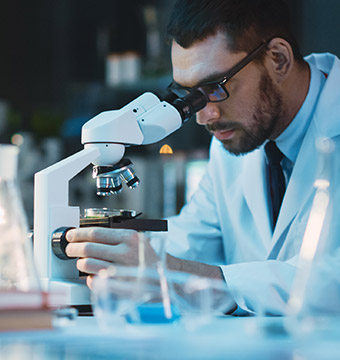Introduction: Why Joint Health Matters
We often take our joints for granted—after all, they quietly carry us through life, letting us bend, walk, run, play, and live with ease. But when joint pain strikes, even basic tasks like climbing stairs, tying shoes, or getting out of bed become challenges. For many, joint discomfort starts subtly: a twinge in the knee, stiffness in the morning, or a dull ache after a long day. Over time, however, these signs intensify if we don’t take care of the underlying cause.
“Joint Genesis” refers—conceptually—to a holistic, proactive approach to regaining joint strength and flexibility. It’s not just about masking pain with drugs, but about regenerating, nourishing, and protecting the joints so they function optimally for the long run. In this guide, we explore the science, the strategies, and the practical steps for applying a “Joint Genesis” philosophy to your life.
I. Anatomy & Mechanics: Understanding Your Joints
To appreciate how “Joint Genesis” works, it helps to understand the structure and function of joints.
1. Joint Types and Functions
- Hinge joints (like knees, elbows) — allow back-and-forth motion
- Ball-and-socket joints (e.g. shoulders, hips) — permit multidirectional movement
- Gliding joints (in the wrists, ankles) — allow sliding movements
- Pivot, saddle, condyloid joints (in the spine, thumb) — a variety of motions
Each joint is composed of several critical parts:
- Cartilage — a smooth tissue on the ends of bones, reducing friction
- Synovial fluid — the lubricating fluid within the joint capsule
- Ligaments & tendons — connective tissues that stabilize and move joints
- Joint capsule & synovial membrane — the envelope and the lining that produce fluid
- Subchondral bone & menisci/discs — structural support inside and under cartilage
2. Why Joints Degenerate
Over time (or due to injury, overuse, poor nutrition, or inflammation), the joint’s materials undergo wear and tear:
- Cartilage becomes thinner and rougher
- Synovial fluid loses viscosity
- Inflammatory processes gradually break down joint tissue
- Oxidative stress damages the cells in joints
- Mechanical imbalances or misalignment worsen stress on specific joints
Therefore, any effective approach to joint health must consider restoration, protection, and balance.
II. The “Genesis” Philosophy: Beyond Pain Relief
- Regeneration: Helping cartilage, synovium, and tissue recover
- Nutrition: Supplying building blocks (amino acids, minerals, vitamins)
- Anti-inflammation: Controlling chronic low-level inflammation
- Oxidative balance: Reducing free radicals that damage joint cells
- Mechanical alignment: Ensuring muscle balance, posture, and joint loading
When combined, these pillars create an environment in which joints can heal, strengthen, and resist future damage.
III. Key Components of Joint Genesis
Below are the core elements one must integrate to bring about joint regeneration and long-term health.
1. Nutritional Foundations
Your body cannot rebuild or maintain joint tissues without the right raw materials. Key nutritional elements include:
- Glucosamine & Chondroitin: Precursors to cartilage molecules
- Collagen (Type II or hydrolyzed collagen): Supplies the protein scaffold in cartilage
- Hyaluronic Acid Precursors (e.g. N‑acetyl glucosamine) or ingredients that support synovial fluid
- Essential Fatty Acids (especially omega‑3s): Powerful anti‐inflammatory support
- Vitamins & Minerals:
- Vitamin C: For collagen synthesis
- Vitamin D & K2: Supporting bone and cartilage health
- Magnesium & Zinc: Cofactors in tissue repair
- Antioxidants (e.g. quercetin, curcumin extracts, green tea polyphenols): to scavenge free radicals
Rather than relying solely on pills, a diet rich in colorful vegetables, fatty fish, nuts, seeds, citrus fruits, and lean proteins will help deliver these nutrients naturally.
2. Targeted Supplements & Botanicals
To complement diet, many people turn to high‑quality supplements:
- Turmeric / Curcumin — for its potent anti‑inflammatory and antioxidant effects
- Boswellia serrata — traditional herb known for joint support
- MSM (Methylsulfonylmethane) — sulfur donor for connective tissue
- Green-lipped mussel extract — contains unique lipids beneficial to joints
- Devil’s Claw, Willow Bark — herbal support for discomfort
Be sure to choose trusted, third‑party tested products and consult a healthcare professional when combining multiple supplements.
3. Exercise & Movement Therapy
Movement is vital for stimulating joint repair and maintaining flexibility:
- Low-impact aerobic exercise: walking, cycling, swimming — improves circulation to joints
- Strength training: maintaining muscle around joints gives support and reduces stress
- Flexibility & mobility drills: stretches, yoga, dynamic movements ensure range of motion
- Joint-specific rehabilitation: e.g. glute exercises for hips/knees, scapular work for shoulders
Importantly, avoid repetitive high-impact stress until joints are stronger and healthier.
4. Anti‑Inflammatory Lifestyle
Chronic, low-grade inflammation is a silent joint assassin. Reducing it improves recovery and slows degeneration:
- Sleep & Recovery: aim for 7–9 hours nightly; growth factors are secreted during sleep
- Stress management: chronic stress raises cortisol, which can degrade connective tissue
- Maintain healthy weight: excess body weight stresses joints (especially knees, hips)
- Avoid pro‑inflammatory foods: refine sugars, excessive processed oils, trans fats
5. Physical Modalities & Regenerative Therapies
For more intensive support, consider:
- Physical therapy / physiotherapy: guided modalities, manual techniques, taping
- Therapeutic ultrasound, laser therapy, shockwave therapy
- Platelet-rich plasma (PRP), stem-cell therapies, or hyaluronic acid injections (in some medical settings)
- Heat and cold therapy: alternation to reduce swelling and stimulate circulation
These can be adjuncts to your baseline program and should be done under professional guidance.
6. Postural & Structural Alignment
Poor posture or alignment often places uneven load across joints, accelerating damage:
- Assess gait and biomechanics: look for leg-length differences, foot pronation, pelvic tilt
- Correct imbalances via exercise or orthotics
- Core and stabilization work: to reduce compensatory stress
- Regular mobility checks: e.g. hips, thoracic spine, ankle flexibility
IV. Step‑by‑Step 12‑Week Joint Genesis Protocol
Here’s a sample roadmap you could follow over 12 weeks to initiate joint regeneration. Adjust based on your condition, fitness level, and physician advice.
| Week(s) | Focus | Key Activities |
|---|---|---|
| 1–2 | Foundation & detox | Remove inflammatory dietary triggers; begin gentle walking; start basic joint supplements |
| 3–4 | Restore mobility | Add daily joint mobility flows (hips, knees, shoulders); initiate light strength work (bodyweight) |
| 5–6 | Build strength | Increase strength training frequency; monitor joint feedback; include compression or support gear |
| 7–8 | Intensify nutrition & support | Introduce advanced botanicals (e.g. boswellia, turmeric complexes); use recovery modalities (cold/heat, massage) |
| 9–10 | Functional integration | Add movement patterns (lunges, squats, push/pull) while minding joint alignment |
| 11–12 | Maintenance & assessment | Review progress; reduce inflammation baseline; plan long-term maintenance |
During each phase, track pain levels, mobility, and functional improvements. If any step causes pain spikes, regress to the prior phase and adjust.
V. Case Stories & Benefits (Hypothetical Examples)
Case A: The Office Worker with Knee Stiffness
Rahul, 45, works long hours at a desk. He began suffering from knee stiffness, especially after sitting. By starting a Joint Genesis plan:
- He eliminated processed sugars, increased omega‑3 intake
- Did daily mobility drills and gentle walking
- After 8 weeks, he noticed smoother movement, reduced creaking in knees, and less soreness when climbing stairs
Case B: The Weekend Warrior
Sameera, 37, enjoys playing badminton on weekends. After a minor ankle sprain, she experienced joint instability and pain. Under a Genesis plan:
- She supplemented with collagen, MSM, turmeric
- Did proprioceptive work, calf and peroneal strengthening
- Used cold/heat therapy post‑play
- Within 10 weeks, her ankle felt strong, her joints less stiff, and she returned to full play
These are illustrative, but many people report meaningful improvements with consistent, targeted approaches.
VI. Common Questions & Considerations
Is Joint Genesis a “miracle cure”?
No. It’s a methodical, consistent approach. No supplement or therapy will rebuild a severely degenerated joint overnight. But many people see measurable benefits when combining all the elements over time.
When should I see a doctor?
- Sudden joint injury (e.g. tears, locks, swelling)
- If pain continues for weeks despite intervention
- In presence of systemic illness (fever, redness)
Always use a professional diagnosis before trying advanced therapies.
Can I combine Joint Genesis with medications?
Often, yes — but always inform your doctor. Some herbs or supplements may interfere with medications. A coordinated plan is safer and more effective than random stacking.
How long before I see results?
Everyone’s body is different. Some people feel subtle shifts in mobility or reduction in stiffness within 2–4 weeks. More noticeable improvements often emerge between 8 and 12 weeks. Full regeneration may take months to years depending on severity.
Are there risks or side effects?
When using high‑potency botanicals or combining many supplements, mild side effects (stomach upset, allergies) can occur. Also, regenerative interventions (like PRP) carry procedural risks. Good guidance and moderation mitigate most risks.
Click Here Official Website –
VII. Measuring Progress & Adjusting
To know whether your “Joint Genesis” efforts are working, track:
- Pain scales — e.g. 0 to 10 daily
- Range of motion — measure degrees of bend or rotation
- Functional tests — time to climb stairs, distance walked, squat depth
- Inflammatory markers (if you get labs) — CRP, ESR
- Subjective feelings — morning stiffness, ease in daily tasks
When improvements plateau, revisit your plan: tweak nutrition, swap or rotate supplements, adjust exercise load, or consult a specialist.
VIII. Long-Term Maintenance: Sustaining Joint Wellness
Once you’ve rebuilt strength and eased pain, the goal shifts to preventing regression.
- Cyclic supplementation: use “on/off” periods or seasonal adjustments
- Continue varied movement: avoid repetitive overuse
- Regular check-ins: mobility tests every few months
- Bone health: ensure strength of bones under cartilage
- Rest and deload weeks: give joints recovery time
Think of it as gardening: once the soil is fertile, you must tend, prune, and nourish so the plants keep thriving.
IX. The Future of Joint Regeneration
Emerging fields show promise and may further enhance the Joint Genesis approach:
- Stem cell therapies — injecting or mobilizing stem cells into joints
- Exosome therapies — cell-signaling particles to stimulate regeneration
- Biologic scaffolds — engineered tissues that integrate and guide cartilage regrowth
- Genetic & epigenetic interventions — turning on genes linked to cartilage repair
- Wearables & smart sensors — continuously monitoring joint load, wear, and recovery
While some are still experimental, they suggest that the future of joint care may merge biology, technology, and lifestyle into highly personalized solutions.
Conclusion
Joint Genesis is not a silver bullet; rather, it’s a comprehensive philosophy and protocol for nurturing joint health from the inside out. By combining targeted nutrition, prudent supplementation, movement therapy, inflammation control, alignment work, and regenerative support, you encourage your joints to heal, strengthen, and resist further damage.
If you’re experiencing stiffness, discomfort, or early symptoms of degeneration, starting a Genesis-style regimen now can put you many steps ahead. Over time, as you integrate these practices into your daily life, you may reclaim fluid motion, reduce reliance on painkillers, and enjoy more active, pain‑free years ahead.
✅ Say goodbye to joint pain —Start your journey to better mobility with Joint Genesis today.



